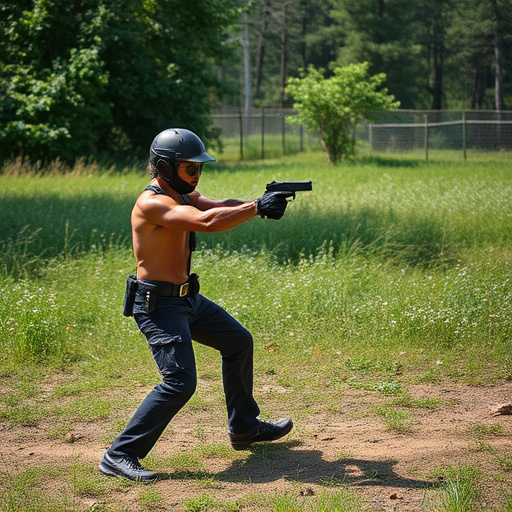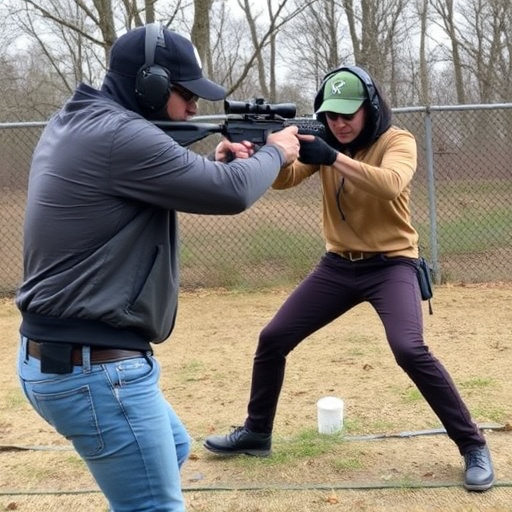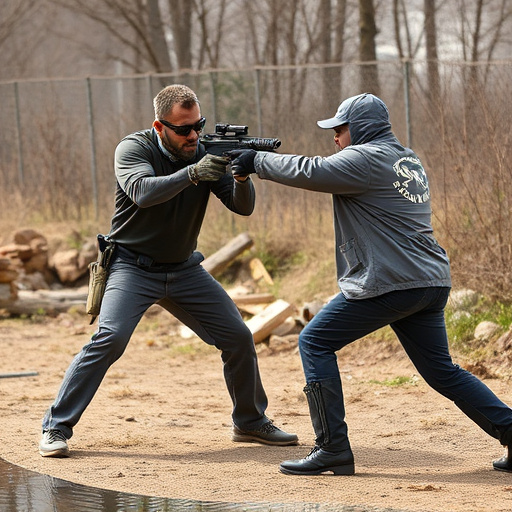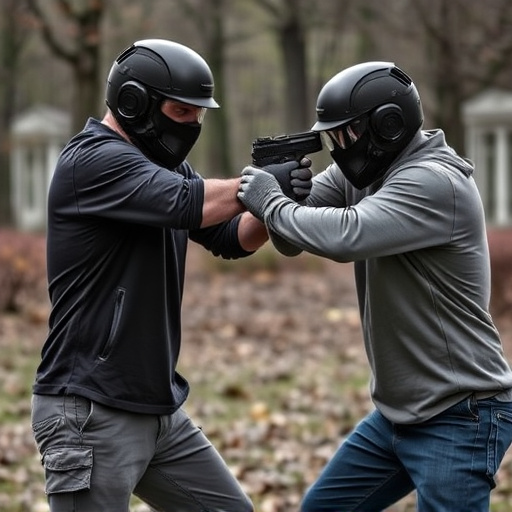Civilian Taser Ownership: State Laws, Permits, and Concealable Stun Guns
In the digital age, civilian Taser ownership for self-defense is popular but regulated differently i…….
In the digital age, civilian Taser ownership for self-defense is popular but regulated differently in each U.S. state. The most concealable stun gun designs, sought after for discretion, require registration, background checks, and permits. State laws vary regarding purchase, carry, power output, and design restrictions, emphasizing responsible ownership to maintain public safety. Before owning a Taser, learn about state laws, get trained, and consider a compact, lightweight design like the most concealable stun gun available for effective yet safe self-defense.
“Uncovering the complexities of civilian Taser ownership, this article navigates state laws and regulations, offering a comprehensive guide for those seeking to understand their rights. ‘Understanding Civilian Taser Ownership’ explores the legal perspective, while ‘State-by-State Regulations’ breaks down unique requirements across different states.
For those interested in the most concealable stun gun design, our section on ‘The Most Concealable Stun Gun Design’ provides insights into features and considerations. From permits and licenses to safety training, this resource ensures responsible ownership.”
- Understanding Civilian Taser Ownership: A Legal Perspective
- State-by-State Regulations: Unraveling the Requirements
- The Most Concealable Stun Gun Design: Features and Considerations
- Permits and Licenses: What You Need to Know
- Safety and Training: Responsibly Owning a Taser
Understanding Civilian Taser Ownership: A Legal Perspective

Understanding Civilian Taser Ownership: A Legal Perspective
In today’s digital era, where safety and self-defense concerns are on the rise, civilian taser ownership has gained significant attention. Tasers, known for their non-lethal force capabilities, offer individuals a powerful tool to protect themselves and deter potential threats. However, navigating the legal landscape surrounding taser ownership is crucial. Each state in the U.S. has its own set of regulations and restrictions, making it vital for prospective owners to understand these laws thoroughly.
The most concealable stun gun design, often sought after by civilians, must adhere to specific legal requirements. These include registration, background checks, and sometimes even permits. States may also impose limitations on where and how such devices can be carried, used, or displayed. Staying informed about these regulations is essential for responsible taser ownership, ensuring compliance with local laws while promoting public safety.
State-by-State Regulations: Unraveling the Requirements

In the United States, the regulations surrounding civilian ownership of Tasers vary significantly from state to state. Understanding these laws is crucial for individuals seeking to purchase and carry stun guns for personal protection. Each state has its own set of requirements, ranging from permit systems to complete bans on non-law enforcement use.
One key aspect that often differentiates state regulations is the definition of a “concealable” stun gun. Some states have specific laws governing the design and size of Tasers that can be carried secretly, with many favoring models that are compact and lightweight, often referred to as the most concealable stun gun design. These regulations aim to balance personal safety with public safety concerns, ensuring that citizens have access to effective self-defense tools while minimizing risks associated with their use.
The Most Concealable Stun Gun Design: Features and Considerations

When it comes to civilian ownership, the most concealable stun gun designs are those that prioritize size and discretion. These devices often take the form of small, compact flashlights or everyday objects masquerading as something innocuous, such as a pen or key fob. The primary consideration here is not just physical dimensions but also weight—the weapon should be light enough to carry comfortably without drawing undue attention.
Features that enhance concealability include adjustable straps for comfortable carrying, durable yet lightweight materials, and designs that mimic everyday items. Some models even incorporate LED lights, adding a layer of functionality while maintaining the element of surprise. In terms of legal considerations, it’s crucial to research individual state laws regarding stun guns, as regulations vary widely on allowed carrying methods, such as concealed or open carry, and any restrictions on certain types of design or power output.
Permits and Licenses: What You Need to Know

In many states, civilians seeking to own a taser for self-defense or personal protection purposes must navigate a series of legal requirements, including obtaining specific permits and licenses. These regulations vary widely across the country, with some states allowing unrestricted private ownership while others mandate stringent criteria. One key aspect to consider is the most concealable stun gun design, as these devices are often categorized under self-defense weapons. States may have specific rules regarding the size, weight, and capacity of stun guns that fall under the definition of a “concealable” weapon, with some even requiring additional training or safety certifications before issuing permits.
When applying for a permit to own a taser, individuals should anticipate a thorough background check, which may include criminal history, mental health assessments, and sometimes even drug screening. Some states might also mandate waiting periods, during which applicants must wait a set number of days after their application is approved before they can legally purchase or possess a stun gun. Understanding these requirements is crucial for prospective owners to ensure compliance with state laws and avoid any legal complications associated with civilian taser ownership.
Safety and Training: Responsibly Owning a Taser

When considering civilian taser ownership, safety and training are paramount. Beyond understanding state laws regarding concealed carry, prospective owners must prioritize responsible use. A taser’s unique capabilities demand a grasp of its functionality, including range, power settings, and de-escalation techniques. Opting for the most concealable stun gun design can enhance personal security without drawing undue attention.
Training programs, often offered by certified instructors or law enforcement agencies, equip individuals with crucial skills. These sessions cover proper handling, safety protocols, and legal considerations specific to each state. They foster a culture of responsible ownership, ensuring tasers are employed only as a last resort when facing imminent physical harm.
When considering civilian taser ownership, it’s clear that state laws vary significantly regarding regulations, permits, and training requirements. Understanding these variations is essential for those interested in purchasing a taser for personal protection. The article has explored the legal perspective, state-by-state regulations, the design of the most concealable stun gun, and safety guidelines. It’s worth noting that responsible ownership involves not only adhering to legal mandates but also prioritizing safety through proper training and handling. In terms of design, the most concealable stun guns offer discreet protection without compromising effectiveness. Ultimately, prospective owners should research their state’s specific requirements, ensure they meet them, and embrace the responsibilities associated with civilian taser ownership.


